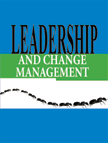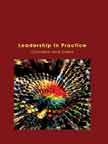Dhirubhai Ambani and Reliance
|
|
ICMR HOME | Case Studies Collection
Case Details:
Case Code : LDEN011
Case Length : 17 Pages
Period : 1958-2002
Pub Date : 2001
Teaching Note :Not Available
Organization : Reliance India
Industry : Varied
Countries : India
To download Dhirubhai Ambani and Reliance case study
(Case Code: LDEN011) click on the button below, and select the case from the list of available cases:

Price:
For delivery in electronic format: Rs. 300;
For delivery through courier (within India): Rs. 300 + Shipping & Handling Charges extra
»
Leadership and Entrepreneurship Case Studies
» Case Studies Collection
» ICMR HOME
» Short Case Studies
» View Detailed Pricing Info
» How To Order This Case
» Business Case Studies
» Area Specific Case Studies
» Industry Wise Case Studies
» Company Wise Case Studies

Please note:
This case study was compiled from published sources, and is intended to be used as a basis for class discussion. It is not intended to illustrate either effective or ineffective handling of a management situation. Nor is it a primary information source.
Chat with us

Please leave your feedback

|
|




<< Previous
Excerpts
Backward Integration
To strengthen his position further, Dhirubhai
decided to integrate backwards and produce fibers. He planned to set
up a polyester filament yarn (PFY) manufacturing plant at
Patalganga...
The Stock Market Adventure
Dhirubhai's biggest contribution to the nation was the development of an equity
culture. Having understood the psychology of the Indian capital markets and the
mindset of Indian investors, he was instrumental in introducing the equity
culture in India.
Dhirubhai gave importance to the small investor and his
contributions, and by doing so, he involved millions of middle class investors.
Reliance went public in 1977 and had its first annual general meeting (AGM) in
1977. Reliance Industries had 58000 investors in 1977...
|

|
Corporate Battles of Dhirubhai Ambani
Despite his unprecedented corporate valour, some corporate bigwigs considered
Ambani to be a manipulator. Critics accused him of using the "more than the
usual" ways of obtaining licenses, getting quick approvals for public issues
and capital goods imports, and of getting policies formulated in favour of
Reliance...
|
|
Political Battles of Dhirubhai Ambani
Dhirubhai maintained good relations with Mrs. Indira
Gandhi and obtained several licenses and permissions during her primeministership.
However, after her assassination in 1984, her son Rajiv Gandhi became
the prime minister, and things changed drastically. In May 1985,
Vishwanath Pratap Singh (V.P.Singh), the Finance Minister in Rajiv
Gandhi's cabinet, decided to shift PTA imports from the open general
licence (OGL) category to the limited permissible list.9
This could be the beginning of a new problem for Reliance as it solely
depended upon PTA imports for its PFY plant. |
Reliance without Dhirubhai
In 2002, the Reliance group with a turnover of Rs
620 billion, assets worth Rs 564.85 billion, and a work force of
over 85,000 people accounted for 5% of the Central Government's
total revenue. It contributed 3 % of India's GDP, 5 % of the total
exports, and 9 % of the GoI's indirect tax revenues.
Exhibits
Exhibit I: Reliance Group of Companies
Exhibit II: The Ambani Family Tree
Exhibit III: Chronology of Events
Exhibit IV: The Bombay Dyeing and Manufacturing Co. Ltd.
Exhibit V: Backward Integration
Exhibit VI: Management Mantras of Dhirubhai Ambani
Exhibit VII: Achievements of Dhirubhai Ambani
9]
To import an item on the limited permissible list, one has to get a clearance
from the director general of technical development.
|
|










